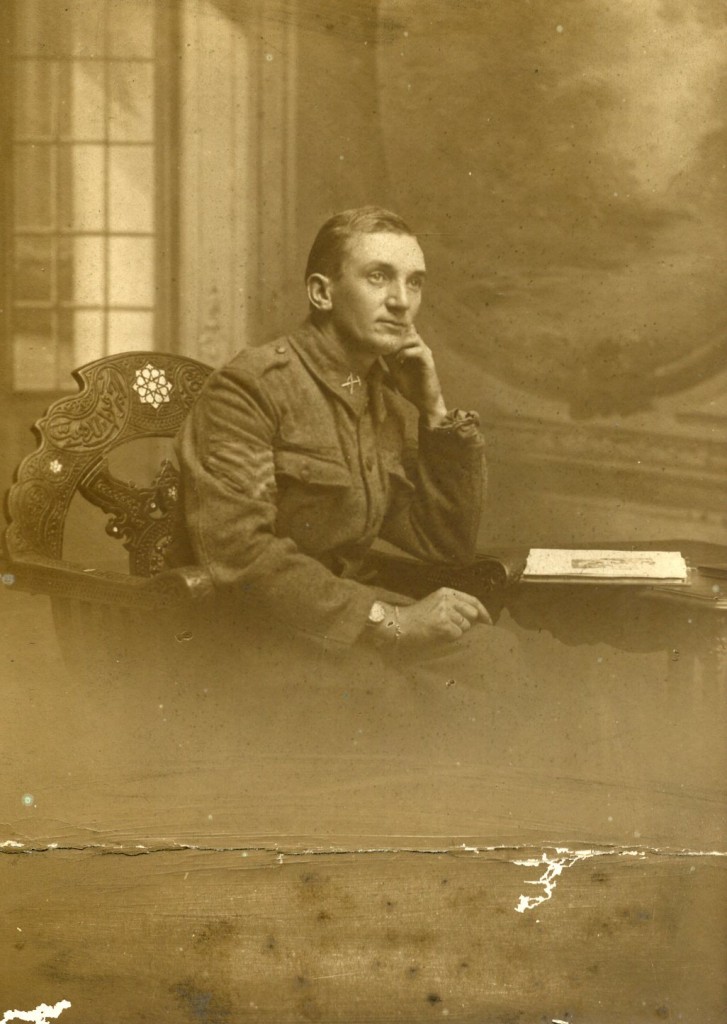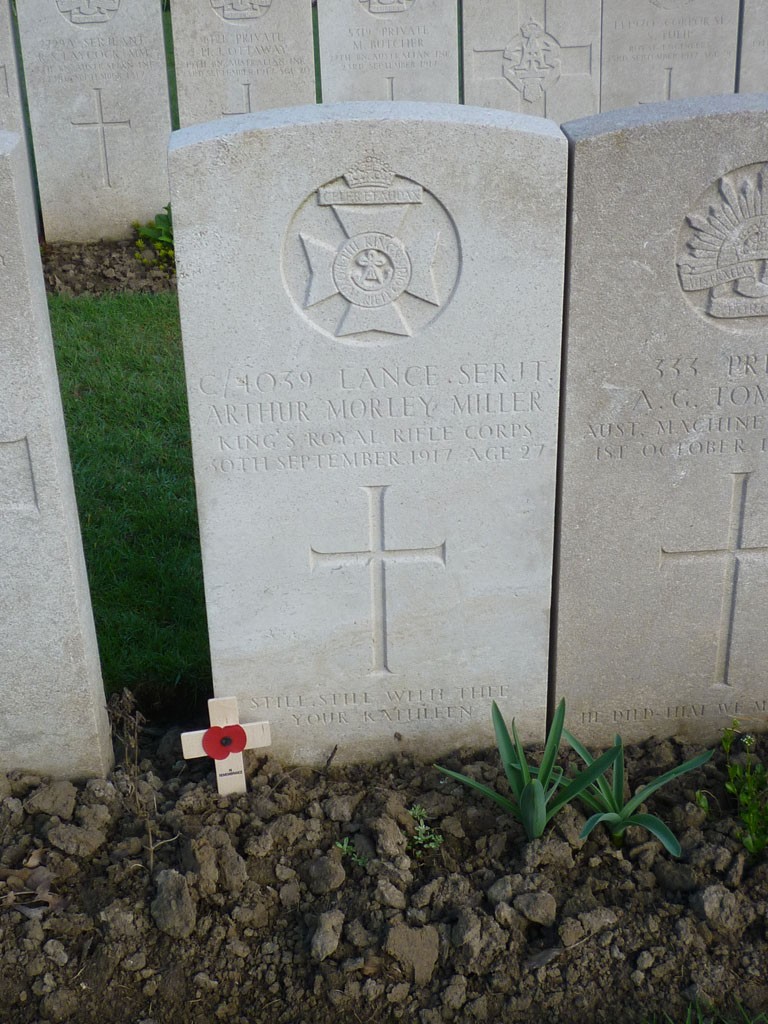J. C. Miller
Service no. 7267
Private, Australian Infantry, A.I.F., 21st Battalion
Died of wounds 19 May 1918 aged 21
CWGC: “Son of Amy Miller, of 296, Clapham Rd., London. Native of Middlesex, England.”
Remembered at Querrieu British Cemetery, Somme, France
Information from the Australian National Archives
John Charles Miller, a single man earning his living as a clerk, lived at 300 Queens Street, Melbourne, Australia when he signed up for service in the Infantry on 12 December 1916. Within days he was on the troop ship Ballarat heading for Devonport, England, where he arrived in late April 1917.
Miller was 5 feet 10 inches and 148 pounds (10½ stone), his chest measured 36 inches and he could expand it by an impressive 5 inches. He had a scar on his right knee. He had blue eyes, brown hair and his complexion was described as “mid”, whatever that means. His father was deceased, but his mother lived at 296 Clapham Road.
The journey was not without events. Miller was hauled up twice – once for failing to report for duty when warned and once for going absent without leave, for which he was punished with 24 hours detention. He was also made to forfeit two days’ pay (10 shillings).
By September 1917 he had joined his battalion. We know he had a period of leave to England between 16 January and 16 February 1918, and on 19 May he suffered a shell wound to his left leg, which shattered. He died of wounds in the 5th Australian Field Ambulance.
Before he died, Miller wrote a will leaving all his possessions to his mother, Amy Miller. This was dated 4 August 1917, that is before he went to France. It was witnessed by Laura Miller of 35 St Stephens Terrace, South Lambeth, who stated that she was involved in “war work at the Admiralty” and by a police constable, Stephen Staughton, who lived in the same house as Amy.


